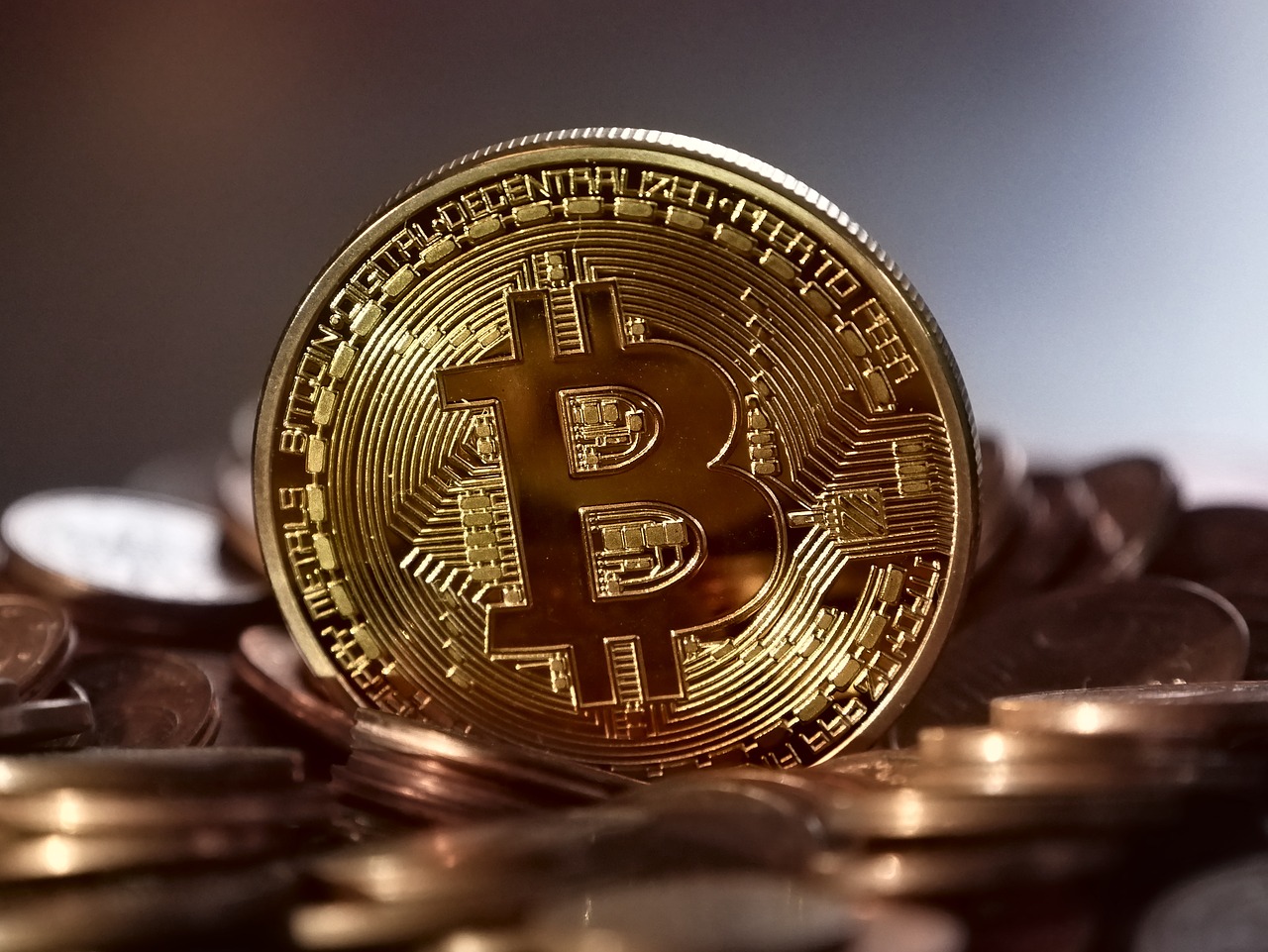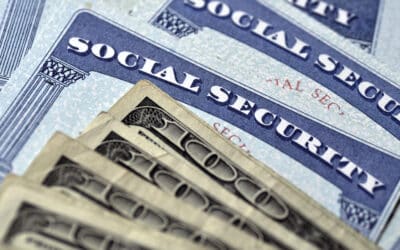Beneath all the gut-level suspicions about cryptocurrencies as something shadowy and unreal, there is a fundamental problem of economics that threatens to undo all the gains Bitcoin has made, and assign it inevitably to the dustbin. Regardless of the particular implementation (the subject of intense debate among technical experts) this basic problem in the economics of currencies that has led some economists to argue that neither Bitcoin, nor any other form of crypto, can ever truly serve as anything better than a purely speculative asset. The economic problem strikes at the very root of hopes for Bitcoin, unlike technical problems which human ingenuity might address; if the regression problem truly proves what it appears to, cryptocurrencies are doomed to a bubble existence before they are even mined.
Ludwig Von Mises, among the most brilliant minds in economics, lived and died before the advent of Bitcoin and had no intention of weighing in on the topic when he wrote his Theory of Money and Credit, first published in 1912. But his solution to the problem of the original valuation of a new form of money plays hell with expectations that new, fully unbacked currencies can stabilize in value and become a permanent part of an economy.
The problem Mises solved had plagued economics since the time of Adam Smith, and his solution made possible a better understanding of prices by “unifying,” as they say in the sciences, subjective value theory and theories of the value of money. This subjective value theory was one of the most important revolutions in economic thought, and was already very widely understood at the time Mises was writing. Subjective value theory simply holds that the economic value of a good is an expression of human desires for that good, not of any internal objective quality like size, mass, or “utils” (speculated to exist by early economists). Economic value is in the eye of the beholder, and it is the preferences and desires of consumers which give goods value in the first place. Thus, prices of goods are ultimately expressions of how desired they are; a Ferrari trades for more than does a wheelbarrow because the humans involved in trade like Ferraris far more than they like wheelbarrows. Not because of cost, nor physical properties, nor imagined utils, but because people are expressing their own preferences in spending decisions and they will part with far more in exchange for the one than for the other. The apparent parallel between costs and prices (ie “it costs far more to make a Ferrari than a wheelbarrow; isn’t that the reason the price is higher?”) actually arises from this same cause: Nobody will spend the kind of money it takes to build a Ferrari, unless he is building something he can sell for Ferrari prices. All kinds of goods could be produced for enormous sums, but aren’t desired in the least by consumers: exploding boomerangs, oil paintings painted over with stucco, mile-deep holes dug then filled back in. All these inanities would trade for enormous prices if cost truly drove price, but instead, it is the high trading price of expensive (highly desired) goods that creates the budget for the enormous costs of producing those goods. In short, the Subjectivist revolution showed that economic value is nothing else but an expression of people’s values; this realization forced the science of economics to loosen its grip on value as matter for scientific investigation, but at the same time resolved all kinds of snares (like the diamond-water paradox and the works of Karl Marx) that have plagued economics through the centuries.
But this sharp turn in the course of economics raised some new puzzles to replace the ones it had resolved. Of particular interest was the question of the actual level of money prices; the Subjectivist revolution had thrown light on the question of the prices of goods relative to one another, the demand side of that question was now answered by reference to consumers’ desire for each good. But for money itself, consumers have no such direct satisfaction to refer to, they only desire money as a way of getting other goods. The subjective satisfaction of possessing money is nothing like the subjective satisfaction from any other desired good, and so this framework cannot directly explain the actual price of any good in terms of money. People have no tool by which to judge the worth of a dollar, and how easily they should spend it, or how much they should spend on any particular good, from mere subjective value.
Another way to understand the problem is as a question of original prices; if money were suddenly introduced to a barter economy, how would people know a good price from a bad price? In barter, a person simply decides whether he wants the item he is getting more than the item he is giving up. His subjective valuation of both goods is in his own mind, ready to help him decide whether he should hold out for a higher price in bananas or accept a lower one. But how does he know whether to hold out for more dollars? The dollar can do him no good except acquiring other goods by trade, he does not like or dislike the dollar as he liked or disliked item he was spending in barter. How can the exchange value of the money become fixed enough for it to be spent with confidence, or accepted without fear?
The solution has two parts, and the first seems trivial on its own. When spending money, one truly evaluates it based on what he expects he can buy with it. If he thinks of a hamburger as a six dollar item, he spends dollars elsewhere with the understanding that every six of these he gives up, he deprives himself of a hamburger, and the same for every other good for which he has some idea of its price. One holds a dollar to be valuable based on expectations about what it can be spent on, that is, based on the array of money prices known to him.
But wait hasn’t this just evaded the question? We asked how specific money prices can come to be without spenders having any idea of the magnitude of their money’s value, how can the answer be “consumers know how much their money is worth by looking at the prices of the goods they want”? We seem to be caught in a circularity here; the consumers trying to evaluate the dollar are relying on an array of existing valuations of the dollar in the form of prices. Everybody is falling back on what everybody else thinks, and so no original price data is being formed.
The answer at this point is to introduce the time element into the puzzle; consumer spending shapes prices today, but the prices consumers are thinking about when evaluating their own money are yesterday’s. The information that a consumer uses to decide how many dollars he is willing to part with in order to get an apple includes how cheaply he was able to get an apple yesterday. Past experience is constantly reshaping expectations about the value of a unit of money, which influences consumer spending behavior, which in turn plays its role in shaping present prices. Thus what appeared to be a circularity (prices determine the value of money determines spending determines prices) is in fact a spiral, with past prices determining the present value of money.
But isn’t this simply another evasion? Doesn’t the cycle of looking back to yesterday’s prices mean looking back an infinite number of days, never reaching an original price? Money must have existed eternally, and the spiral must go back forever for it to explain prices as they are today. And here is the final piece: This process of price formation evolves out of barter. In barter, there are no money prices, everything is traded simply on the basis of its use value, and so there is no need for anyone to consider yesterday’s price for anything. If he likes what he is getting more than what he is giving up, that is all he needs to consider. The more abstract value of money, with all its expectations of the future and memories of the past, is irrelevant for barter. Barter relies entirely on present, immediate evaluations of goods. But the problems of barter are severe as well, and in order to facilitate exchange, more tradable goods can benefit humanity by serving monetary functions.
One might, for instance, come to the market seeking to trade away a pig for wheat, but find the sellers of wheat to be all vegetarians. A solution would be to find some third good, something that the vegetarians wanted, being sold by somebody who did indeed want pork. This third good is serving (briefly) the function of a money. Obviously, any good serving this role serves better the greater the variety of sellers that want it. If nearly every seller at the market likes liquor, then liquor is the best choice for this money function. This kind of standardization, around a single commodity such as gold or whiskey, greatly facilitates trade when it is achieved, and it can readily be achieved when the good selected is one already traded in the market and popular among the participants. Even those who do not wish to consume the good acting as money will still accept it in trade, knowing that they can use it to purchase whatever they wish. But at the beginning of this process, gold or whiskey is trading as jewelry or drink; the prices of the good serving the monetary function are at first determined on a barter basis, as merely one good of many. It is only later, once the monetary function of the good has become well established, that the money-price question ever arises. Until then, the problem of evaluating gold or whiskey is merely the same problem it was in barter, and it is solved the same way.
This account of the origin of money out of commodity barter solved a difficult problem in economics and allowed economists to more effectively study money prices by dispensing with the ad-hoc patches they had put over this apparent hole in subjective value theory. Since Mises, there has been no need for a separate, arcane account of the value of money, contrary to and ultimately incompatible with the account of the value of all other goods. The science was unified and the hole in the theory was repaired.
But what was a blessing to the twentieth century has become a thorn in the twenty-first. There is no logical reason to reverse this account of the evolution of money prices, indeed it is still the most satisfactory account of this necessary process. So are Bitcoin and the rest of the crypto contenders doomed ventures? Lacking any link to a tradable commodity, but instead being produced by GPU cycles etc. are cryptocurrencies necessarily arbitrary in value, having been flung onto the market fully formed instead of organically evolving out of people’s existing preferences? Some economists would certainly say so, particularly Misesians for whom the formation of money prices is a headline issue.
To answer this question, let us consider the comparable case of the paper and electronic U.S. dollar. Now the modern dollar is not commodity money in the sense that it once was; originally the paper dollar was gold-backed, much like a warehouse receipt for a piece of gold, ready to be reclaimed. Such redeemable paper money is virtually as good as gold, since it can, at any time, be converted into its face value in gold by the issuing institution. When somebody accepted a dollar as payment, he was assured that he was not receiving mere paper, but a firm title to some gold in a vault.
Thus the evolutionary chain of value runs from gold, as merely one good of many being exchanged in village markets, to gold as an organically evolved money, to paper money as a firm stand-in for gold locked in the vaults of banks and treasuries. It was the fixed, reliable policy of the treasury or bank to redeem dollars for gold that gave the paper dollar its original value and made it workable as a currency. The reliability of this redemption has varied wildly throughout history, until it failed entirely under Richard Nixon in the U.S. and in numerous other paper-money regimes since. But once a paper currency had a history of use and an array of historical prices for consumers to use in evaluating it, it became possible for it to continue on at least adequately without gold redemption. Though the end of gold redemption was hugely destructive for the American economy, it did not simply plunge the dollar into an abyss of being worth only the paper it was printed on.
The reason for this is not entirely down to the historical legacy of gold backing; it would have been impossible for the dollar to be introduced without gold backing, but it was not impossible for it to function without gold backing once it was well established. The reason should be clear: On the first day of the dollar, the price information people used in spending it was taken from the history of gold. Consumers could easily tell a bad dollar price from a good price by converting it into a gold price, and comparing it to the rich history of gold prices instead. This in turn allowed the economy to operate for decades in dollars and establish a similarly rich history of dollar prices for consumers to use in the future, even after the end of gold redemption.
Bank notes issued by private institutions have had a similar history, starting out as paper receipts or stand-ins for actual deposits of gold or silver held in the vaults of banks. Mises himself analyzed the process by which these fully-backed notes become mixed with “fiduciary media”, notes identical to those representing physical precious metals, but issued by the bank in excess of actual reserves. As confidence in a bank’s issued notes increases, so does its latitude in printing these highly-profitable pieces of paper. One way to understand this is to say that sellers, unaware of the falsehood of the excess notes, accept them simply in error. However, seller behavior does not reflect this, the strongest example being acceptance of the modern dollar, not only in excess of reserves but wholly and openly without them! Sellers seem willing enough to knowingly accept inflated or unbacked notes as long as they are confident against a bank run or other catastrophe wiping out the notes wholesale.
Perhaps a better way to understand the backing of banknotes and fiduciary media is as follows. The original issuing bank backs its notes by promising to redeem them for a declared amount of precious metal. This link to a commodity lets people evaluate and use the notes, spending them based on the equivalent value of the commodity. It also allows businesses to accept them with confidence in the first phase. But in accepting the notes, these businesses are adopting a behavior very much like that of the original issuing bank. The ACME Bank issues notes and promises to redeem them for a certain amount of gold; the ice cream shop across the street, in beginning to accept ACME Bank’s notes, is promising consumers to redeem ACME Bank’s notes for a certain amount of ice cream. The commitment of the ice cream shop to redemption is more flexible and less reliable, and thus less significant, than that of the bank, but the potential effect of all the various businesses that may accept a bank’s notes must soon dwarf the impact of the bank itself. The notes effectively transition from being backed by gold in the bank to being backed by every commodity offered in exchange for them. Stated a different way, the bank acts as merely the first seller to accept the notes, and firmly commits itself to accepting them in exchange for a widely-valued commodity, in order to pave the way for other businesses to do the same on whatever terms they will.
The historical fact that successful paper currencies have circulated as substitutes for the commodity they represent, and not simply been redeemed out of existence as fast as consumers can bring them in, reflects the same reality as we earlier observed with fiduciary media: It is confidence, not actual redemption, that keeps a paper money in operation. It might have appeared that this confidence was of the redeemability of the notes into gold at the bank, but we find equally effective (in our day) the full replacement of gold redemption by grocery redemption, gas redemption, housing redemption, etc. etc. The enormous array of commercial institutions which will accept dollars in exchange for a variety of goods have entirely replaced treasury’s gold backing of the dollar with their own kinds of backing, as the next step in the gradual evolution of this particular money. In this framework of understanding, the dollar is not today unbacked; it was unbacked when first conceived, and was first given backing through the promise of gold redemption. Once having that backing, however, it gathered more and more backers to it, more institutions which will reliably convert it into goods desired by consumers. The present situation is only that the original backer has dropped out of the group, while millions of the subsequent joiners-in are still carrying on the practices of which “backing” a paper currency consists.
The function of backing a currency is sometimes assumed to be a state activity, but of course the most cursory glance at the history of banknotes dispels this error. Likewise, we might assume that giving notes or other kinds of tokens value depends on consumers first depositing commodities in banks and thus creating the deposits which the notes represent, but the modern history of fiat contradicts this as well. Once a currency has been established, no singular kind of backing is required, as the dollar has carried on its merry (if unhinged) way ever since the end of gold redemption. I repeat that redemption in groceries at the grocery store is fundamentally the same as redemption in gold at the bank. Once get a currency established and accepted at a number of businesses, those businesses are properly the institutions backing the currency; the necessity of the commodity-holding bank or the firm political commitment of the treasury is only to initiate the chain of events which proceeds next towards this decentralized backing of the currency. The issuing bank or treasury with its reserves of gold is critical in reassuring the first businesses to accept the notes that they are not accepting mere paper, that they will not be caught out alone, having given away goods in exchange for worthless paper. But once those same institutions are surrounded by other institutions also committed to the acceptance of the paper, these neighbors provide that confidence. The role for the issuing institution shrinks, potentially to nothing. Thus, it is the very first institution, whether government, bank, or business, that commits itself thus, “Give me your notes and I will give you this specified commodity,” takes upon itself a unique risk, that of being caught selling (“redeeming”) goods of real value for paper of none. In the worst case they will end up with all the notes, having given away a great value of goods in exchange, and facing an economy full of people who don’t want their notes and won’t give them anything for them.
This unique risk is mitigated in the bank or treasury by issuing the notes as receipts for metals which the economy definitely will exchange for other goods. During the highest-risk, initial phase of the process of integrating the notes into the economy as money, every note corresponds to deposited gold. But even in the bank itself, the gradually-increasing backing of other institutions increases the confidence in the notes, and they can begin to issue notes in excess of reserves. And they can get away with this, for centuries sometimes. The one-to-one kind of backing that the bank practices in the early stage, before issuing any fiduciary media, is a solution to the unique risk of initiating a new currency, of being the first backer of a new type of note or token or coin.
It is this problem, the problem of being the first redeemer or first acceptor of a particular kind of currency, not knowing if once you have accepted the currency whether you will find anybody else who will accept it from you, that is the whole secret of new currencies. Ultimately all currencies either find decentralized backing from a variety of institutions or they fail; indeed, decentralized backing of the kind we have been discussing is exactly what it is to be a money. The original commodities that emerged from barter to serve as money, what allowed them to do this? They emerged as moneys because they were widely accepted by sellers in the market, gold could be traded for a variety of goods because it had already the precise quality which modern currencies seek to have. It had already decentralized backing from a variety of sellers. Again, this is so essential to the operation of a money that all other forms of backing are ultimately dispensable, and no other form of backing can save a money if it fails to develop decentralized backing of the kind described above.
If gold overcame the first-redeemer problem by being priced and valued on the basis of its popularity for industrial and ornamental purposes, and bank notes overcame the first-redeemer problem by being at first convertible into gold, thus availing themselves of gold’s history, the question about cryptocurrency is whether, and how, it might perform this same feat. Modern dollars (“Federal Reserve notes”) are quite as ethereal and unreal as the most obscure cryptocurrency, yet they command goods all across the world because they overcame the first-redeemer problem and established decentralized backing; once this job has been done, they are out of danger from their “unbacked” status.
Fundamentally, the solution to the first-redeemer problem in the modern age is to attach the currency in some way to Mises’s spiral; to evolve its valuation from some existing element of the economy and thus connect the present value of the currency to an existing body of historical prices. This is exactly what gold redemption did, through two steps: 1) It allowed notes with no history of prices of their own to “borrow” gold’s history of prices and 2) It made sure that any business that chose to accept the notes was not “alone” in accepting them; there was always the institution of the bank or treasury which would also accept the notes in exchange for goods (gold). It is these two elements that must be reproduced for a new potential money to become money in fact.
Can this process be repeated in the case of Bitcoin? Certainly Bitcoin cannot simply be treated like a redeemable bank note; the continual process of mining decouples the supply of Bitcoin from the deposits it would represent. The supply mechanism of crypto is incompatible with precious metal redemption, at least in the critical early phase. However, another, similar process has already taken place, and an unorthodox solution to the first-redeemer problem has perhaps emerged in the case of Bitcoin.
In the case of banknotes, it is the original issuing bank that solves the first-redeemer problem and bears the risk (having taken steps to mitigate it by accepting deposits). But a bank could issue notes instead against its own huge stockpile of precious metals instead of those of depositors, of course facing the danger that everyone it pays in notes will be eager to redeem them, and simply clean out the bank. This behavior is far riskier (to the bank) than traditional note issue, but it would be, from the economy’s perspective, an equally good solution to the first-redeemer problem. The effects on neighboring institutions would be the same, and they would have the same reason to confidently accept the notes, and the same historical knowledge of prices to use when evaluating the notes. This riskier kind of redemption, risking one’s own assets in hopes that the issued notes will become popular, for all its downsides to the bank, is analogous to the behavior that has perhaps overcome the problem in Bitcoin’s case.
Pizza joints and others in the Bitcoin community in the early days displayed the same kind of behavior as a bank backing its notes: In an environment where nobody else wants to accept a money, they committed themselves to redeeming the coins in the form of pizza, and their publicly declared prices became the first price data for spenders of newly-mined coins. The evaluation part of the first-redeemer problem was solved by this initial step of offering pizza for a specified amount of Bitcoin, much like a bank setting the gold ratio of its notes. The confidence building part of the problem, where other institutions must be induced to accept the coins, is tackled by the firm ideological commitment or speculative position that led these pizza joints to stake out and maintain their own redemption policies for Bitcoin, even in that high-risk initial environment.
As a bank is at first the only institution to accept its notes (through redemption) and deliberately makes this fact very public in order to let others know that in the last resort, they are not going to be caught out alone, so the various businesses in the Bitcoin community which published their intention to redeem Bitcoin for pizza provided a necessary element for the adoption of Bitcoin as a money. Other institutions knew that in the last resort they are at least getting a token for some pizza when they accept Bitcoin, just as the first shops to accept banknotes knew they were at the very least getting a token for some gold in the vault. The speculative element, the concern over whether redemption will actually be performed in the future, has always been present, and it is only repeated, actual performance in the early phase, that can convince the public that a note or coin is useful as a money. The bank must truly redeem some notes; the pizza places and cabbies must really turn over some pizzas and cab rides. And the original backing institution must maintain this policy until decentralized backing develops and numerous other institutions are likewise accepting (backing) the currency.
We see then that in the development of any new kind of money of deliberate creation, the crucial step is the initial taking on of risk, for once numerous institutions will accept the currency, its place as functional money is secured. Until that happens, however, one initial holder of real goods must commit itself to redeeming the notes or coins, to acting as the first backer at risk to its own pool of resources. The redeeming banks and treasuries provided this for notes, and it seemed that without such powerful institutions, Bitcoin could not achieve the same feat. What has instead happened is the wide variety of early adopters of Bitcoin have doggedly maintained their commitment to redeeming the coins in the form of pizzas, rides home, digital art, and all the rest. A large community of ideologically committed or at least hopeful providers of goods and services have carried out, at their own risk, the services of an issuing institution in the creation of a new money. Bitcoin was introduced as a pizza-backed commodity money, just as the dollar was introduced as a gold-backed one, and the performance of the initial backing institutions of Bitcoin might, just might, have done the job.











